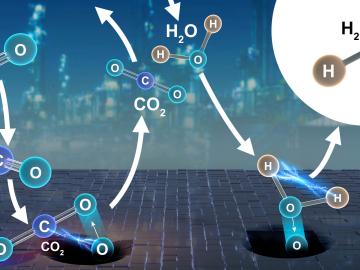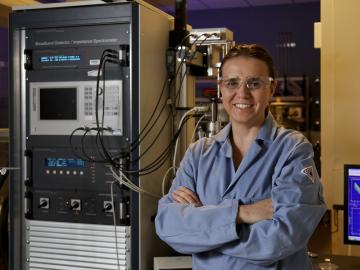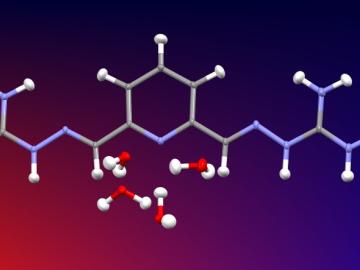
Filter News
Area of Research
- (-) Materials (94)
- Advanced Manufacturing (9)
- Biology and Environment (61)
- Building Technologies (2)
- Computational Biology (2)
- Computational Engineering (1)
- Computer Science (4)
- Electricity and Smart Grid (1)
- Energy Science (96)
- Energy Sciences (1)
- Functional Materials for Energy (1)
- Fusion and Fission (25)
- Fusion Energy (15)
- Materials for Computing (15)
- National Security (12)
- Neutron Science (123)
- Nuclear Science and Technology (17)
- Quantum information Science (2)
- Supercomputing (92)
News Topics
- (-) Exascale Computing (2)
- (-) Frontier (3)
- (-) Fusion (7)
- (-) High-Performance Computing (4)
- (-) Microscopy (27)
- (-) Neutron Science (33)
- (-) Polymers (17)
- 3-D Printing/Advanced Manufacturing (23)
- Advanced Reactors (4)
- Artificial Intelligence (9)
- Big Data (2)
- Bioenergy (11)
- Biology (4)
- Biomedical (7)
- Buildings (5)
- Chemical Sciences (32)
- Clean Water (3)
- Composites (9)
- Computer Science (17)
- Coronavirus (4)
- Critical Materials (13)
- Cybersecurity (4)
- Energy Storage (34)
- Environment (15)
- Grid (5)
- Irradiation (1)
- Isotopes (13)
- ITER (1)
- Machine Learning (5)
- Materials (73)
- Materials Science (78)
- Mathematics (1)
- Molten Salt (3)
- Nanotechnology (39)
- National Security (3)
- Nuclear Energy (16)
- Partnerships (11)
- Physics (28)
- Quantum Computing (3)
- Quantum Science (11)
- Security (2)
- Simulation (1)
- Space Exploration (2)
- Summit (2)
- Transportation (14)
Media Contacts

Using additive manufacturing, scientists experimenting with tungsten at Oak Ridge National Laboratory hope to unlock new potential of the high-performance heat-transferring material used to protect components from the plasma inside a fusion reactor. Fusion requires hydrogen isotopes to reach millions of degrees.

A new method developed at Oak Ridge National Laboratory improves the energy efficiency of a desalination process known as solar-thermal evaporation.

Collaborators at the Department of Energy’s Oak Ridge National Laboratory and U.S. universities used neutron scattering and other advanced characterization techniques to study how a prominent catalyst enables the “water-gas shift” reaction to purify and generate hydrogen at industrial scale.

A team of researchers at Oak Ridge National Laboratory have demonstrated that designed synthetic polymers can serve as a high-performance binding material for next-generation lithium-ion batteries.

Researchers have pioneered a new technique using pressure to manipulate magnetism in thin film materials used to enhance performance in electronic devices.

Scientists have discovered a way to alter heat transport in thermoelectric materials, a finding that may ultimately improve energy efficiency as the materials

OAK RIDGE, Tenn., March 22, 2019 – Karren Leslie More, a researcher at the Department of Energy’s Oak Ridge National Laboratory, has been elected fellow of the Microscopy Society of America (MSA) professional organization.

Vera Bocharova at the Department of Energy’s Oak Ridge National Laboratory investigates the structure and dynamics of soft materials.

Researchers used neutron scattering at Oak Ridge National Laboratory’s Spallation Neutron Source to investigate the effectiveness of a novel crystallization method to capture carbon dioxide directly from the air.

Scientists have tested a novel heat-shielding graphite foam, originally created at Oak Ridge National Laboratory, at Germany’s Wendelstein 7-X stellarator with promising results for use in plasma-facing components of fusion reactors.


